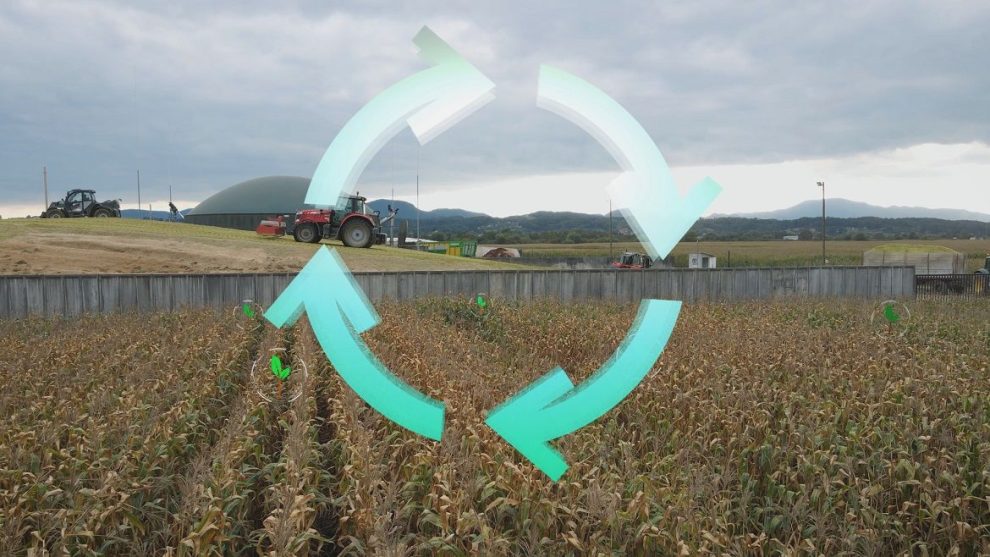Regenerative agriculture has gained ground relevance regenerative agriculture has emerged in recent years as a response to the problems facing the agricultural sector globally. This approach goes beyond traditional methods, promoting a change in the way natural resources are managed, especially soil, which is essential for food production. Rather than focusing solely on short-term productivity, regenerative agriculture seeks to restore and maintain the health of the agricultural ecosystem in the long term. This perspective includes a series of practices that foster soil resilience, biodiversity and carbon retention capacity, thus contributing to both climate change mitigation and the sustainability of agricultural activities.
The concept of regenerative agriculture implies a break with conventional agricultural practices that, in many cases, have caused soil degradation through intensive use of chemicals, deforestation and overexploitation of water resources. By promoting more natural and less invasive methods, regenerative agriculture not only becomes a viable option for food production, but also has the potential to reverse the environmental damage caused by modern practices.
Soil regeneration
Soil regeneration is the cornerstone of regenerative agriculture. Throughout history, soils have been exploited for food production without regard to the natural processes that allow them to remain fertile and healthy. However, soil structure and composition are essential to ensuring long-term agricultural productivity. Regenerative agriculture places emphasis on returning to the soil what it has lost, whether in terms of nutrients, organic matter or biodiversity.
One of the biggest problems facing agriculture today is soil erosion. When soils lose their topsoil, they become less able to retain water and nutrients, reducing productivity and increasing the need for external inputs such as chemical fertilizers.
In contrast, regenerative practices help protect soil from erosion by mulching and incorporating organic matter. This not only improves soil structure, but also allows for greater water infiltration, resulting in better water resource management.
Regenerative soil also involves increasing its capacity to store carbon. As organic matter decomposes in the soil, the carbon it contains is fixed in the soil instead of being released into the atmosphere as carbon dioxide, a greenhouse gas. This carbon sequestration process is key to mitigating climate change, and regenerative agriculture plays a crucial role by promoting practices that increase the organic matter content of soils.
The role of biodiversity
Biodiversity is another central element of regenerative agriculture. While conventional agriculture tends to favour monoculture, which involves planting a single species on large tracts of land, regenerative agriculture encourages crop diversity and the coexistence of different species.
This diversity is beneficial not only for the soil, but also for the ecosystem in general, as it promotes a more balanced and resilient environment against pests, diseases and climate changes.
Monoculture depletes the soil by requiring the same nutrients over and over again, creating an imbalance in soil composition and making it more susceptible to erosion. In contrast, crop rotation, which is a common practice in regenerative agriculture, allows different plants to contribute different nutrients to the soil and break pest and disease cycles. This reduces the need for pesticides and chemical fertilizers, which benefits both the environment and the health of farmers and consumers.
Crop diversity also encourages the presence of fauna and flora that are beneficial to the agricultural ecosystem. Pollinating insects, such as bees and butterflies, depend on plant diversity to survive. These systems, by promoting a more diverse environment, create favorable habitats for these pollinators, which in turn are important for the production of many foods.
Regenerative practices for soil
Among the various practices implemented in regenerative agriculture, some stand out for their ability to restore and improve soil health. One of the most important is no-till farming, which eliminates the use of plows and other intensive tillage methods that can alter the structure and cause erosion. By avoiding tillage, the topsoil is protected, biodiversity is maintained, and the soil’s ability to retain water and nutrients is improved.
Another practice is planting cover crops between harvest seasons. These crops are not intended for consumption, but are used to cover the soil and prevent its exposure to the elements. By maintaining a constant plant cover, the soil is protected from erosion and its structure is improved. In addition, cover crops, especially legumes, can fix nitrogen in the soil, reducing the need for synthetic fertilizers and improving soil fertility naturally.
Animal integration is another aspect of regenerative agriculture. Rather than separating crop and livestock production, the two activities are promoted to be integrated. Rotational grazing, for example, involves moving animals from one place to another to avoid overexploitation of the soil. When animals graze, they provide nutrients to the soil through their manure, which improves its fertility. In addition, the constant movement of animals prevents soil compaction and allows for its regeneration between grazing cycles.

Regenerative agriculture and climate change
Climate change is one of the biggest challenges facing agriculture today, and regenerative agriculture offers viable solutions to mitigate its effects. By increasing the soil’s capacity to store carbon, regenerative agriculture contributes to reducing the amount of carbon dioxide in the atmosphere, helping to combat global warming.
Unlike conventional agriculture, which relies heavily on fossil fuels and emits large amounts of greenhouse gases, regenerative agriculture has a much lower environmental impact and can actually be part of the solution to climate change.
Regenerated soil is also more resilient to extreme weather events, such as droughts and floods. By improving the soil’s ability to retain water, regenerative agriculture allows plants to better survive during periods of water scarcity, which is especially important in areas affected by desertification or water stress. Additionally, by increasing biodiversity and improving overall ecosystem health, regenerative practices help create more resilient agricultural systems that can better adapt to changing climate conditions.
Another relevant aspect is that regenerative agriculture promotes the efficient use of natural resources, especially water. In a context where climate change is exacerbating problems related to water availability, the ability of regenerated soils to retain water more effectively is crucial.
Regenerative agriculture offers a viable and necessary alternative to the challenges facing agriculture in the 21st century. This approach not only improves agricultural productivity in the long term, but also contributes to climate change mitigation and the conservation of natural resources. However, for regenerative agriculture to become a common practice, a number of barriers must be overcome, both cultural and economic and political.
The future of agriculture depends on the ability to restore and maintain the ecosystems on which food production depends. Regenerative agriculture is not just a way to do things better, but to radically change the way we understand the relationship between agriculture and nature.















Add Comment